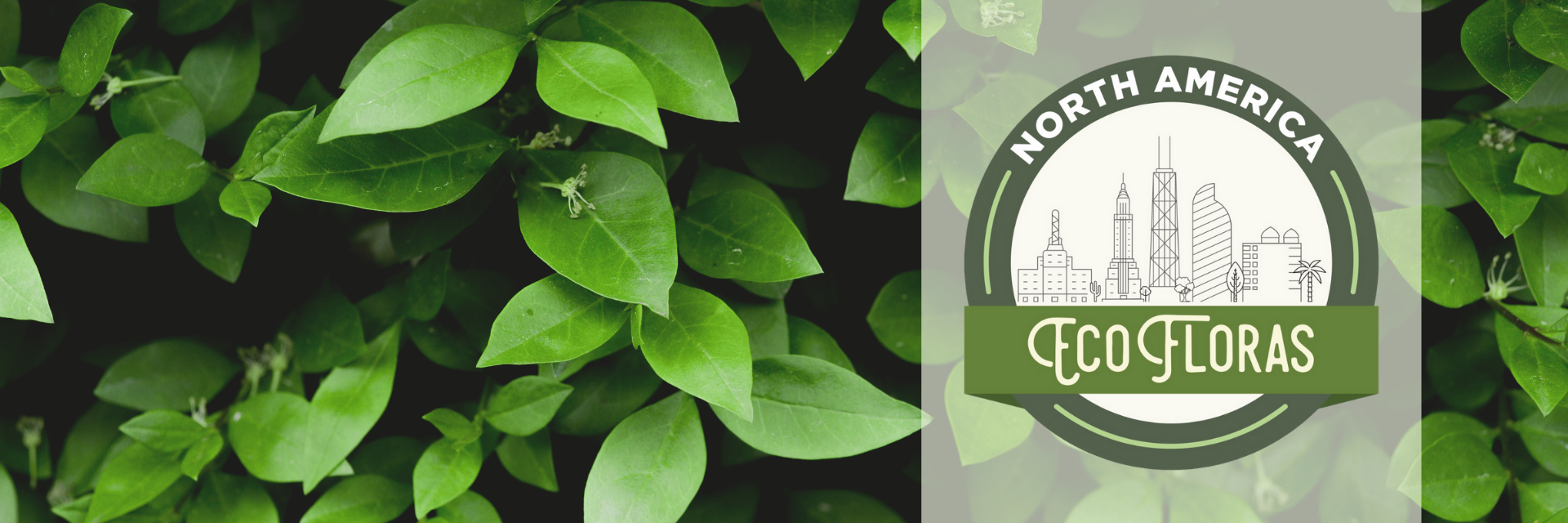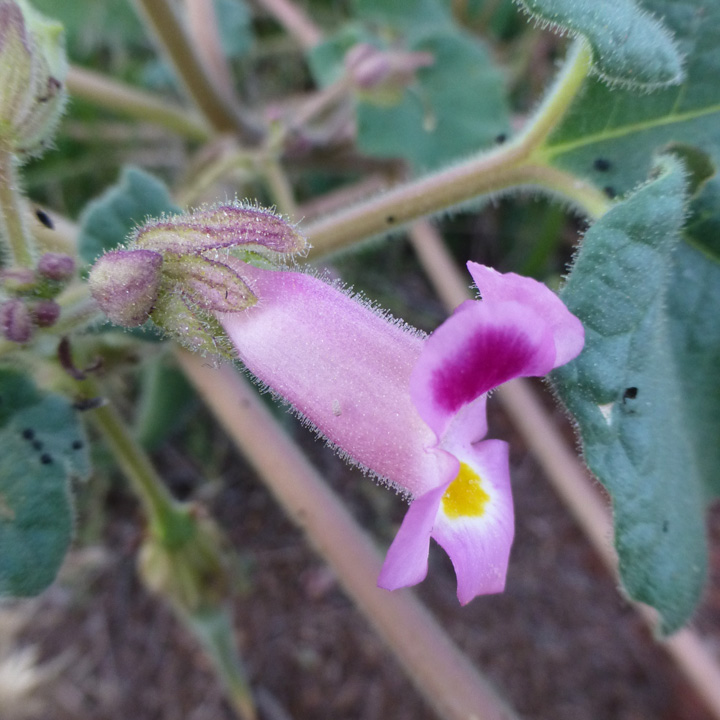
|
Martyniaceae |
|
|
PLANT: Herbs, viscid-pubescent, annual or perennial, usually strongly scented. LEAVES: simple, opposite or subopposite, exstipulate, long-petioled, entire to sinuate, dentate, or lobed, cordate at base. INFLORESCENCE: a terminal raceme. FLOWERS: showy, perfect, zygomorphic; calyx bibracteolate, composed of 5 irregular sepals that are fused and split abaxially to base; corolla sympetalous, 5-lobed and bilabiate, the tube cylindrical at base and equaling or surpassing the calyx, the throat campanulate or infundibular, the upper lobes exterior in bud; stamens 4, didynamous, or 2, the second pair staminodial; filaments attached to the corolla; anthers with two divergent cells; ovary superior and inserted on an annular glandular disk, unilocular, bicarpellate with 2 parietal placentae expanded into 2 broad Tshaped lamellae cohering above into false partitions; style 1; stigma with 2 flat and sensitive lobes; ovules few to many. FRUIT: a drupaceous capsule, bivalved and dehiscing longitudinally, imperfectly 5-celled, frequently crested and always terminated by an incurved 2-horned beak; exocarp thick, fleshy, deciduous in 2 valves; endocarp woody and persistent (can be found at any time of the year), sculptured, crested along the adaxial (and sometimes abaxial) suture. SEEDS: 4 to many, often somewhat irregularly compressed, the testa corky-tuberculate in ours. NOTES: 5 genera, 13 spp. Native to the U. S., Mex., W. Ind., C. and S. Amer., naturalized in other parts of the world. REFERENCES: Raul Gutierrez Jr., 2007, Vascular Plants of Arizona: Martyniaceae. CANOTIA 3 (2): 26-31. |
|
This project was made possible in part by the Institute of Museum and Library Services [MG-70-19-0057-19].
Powered by Symbiota


